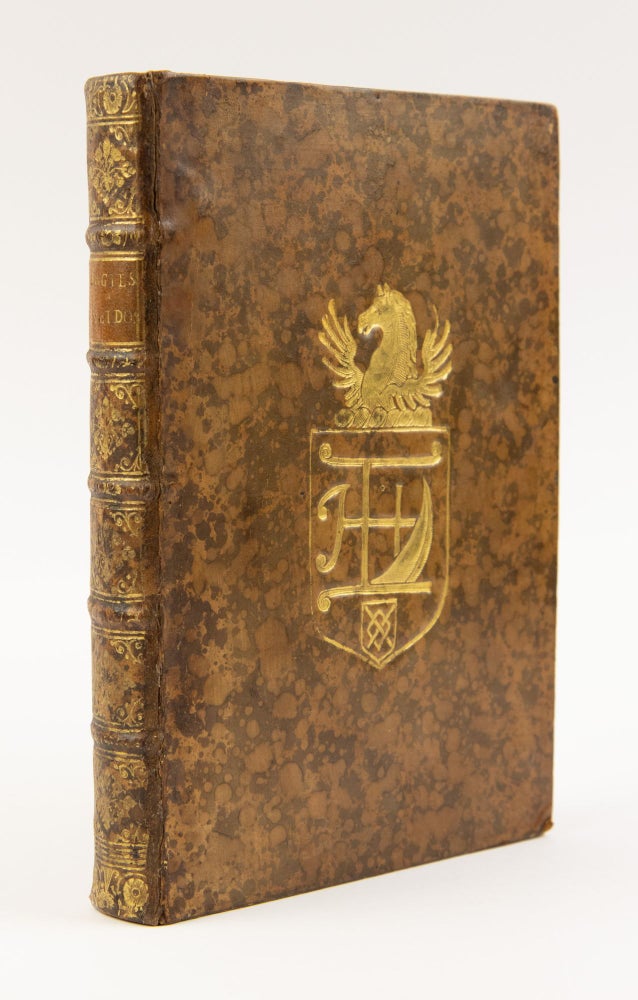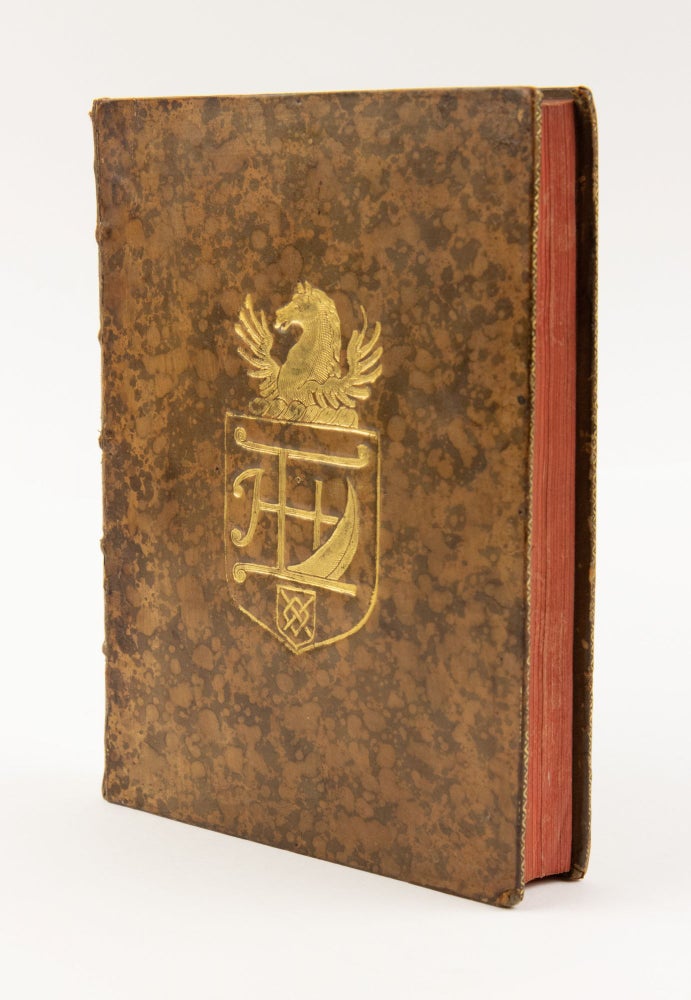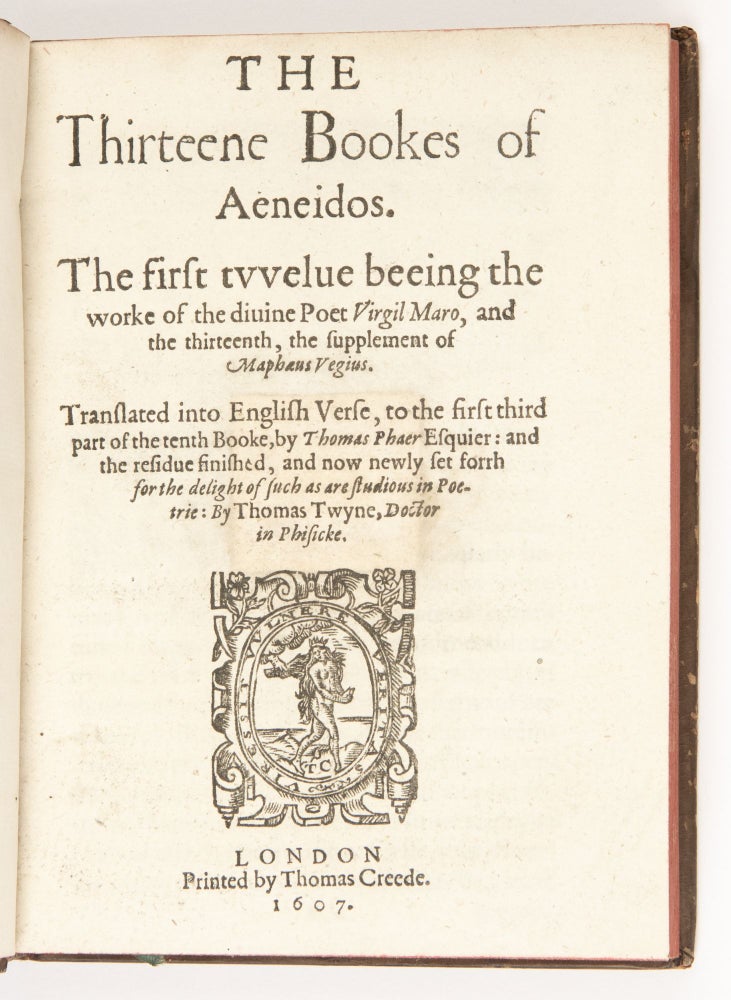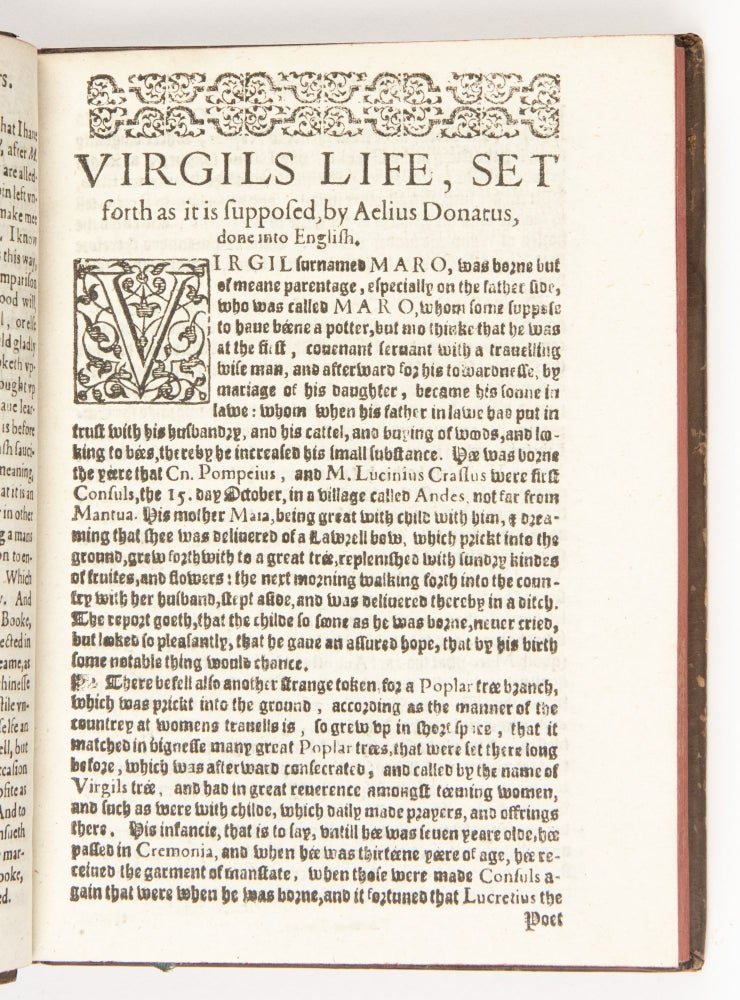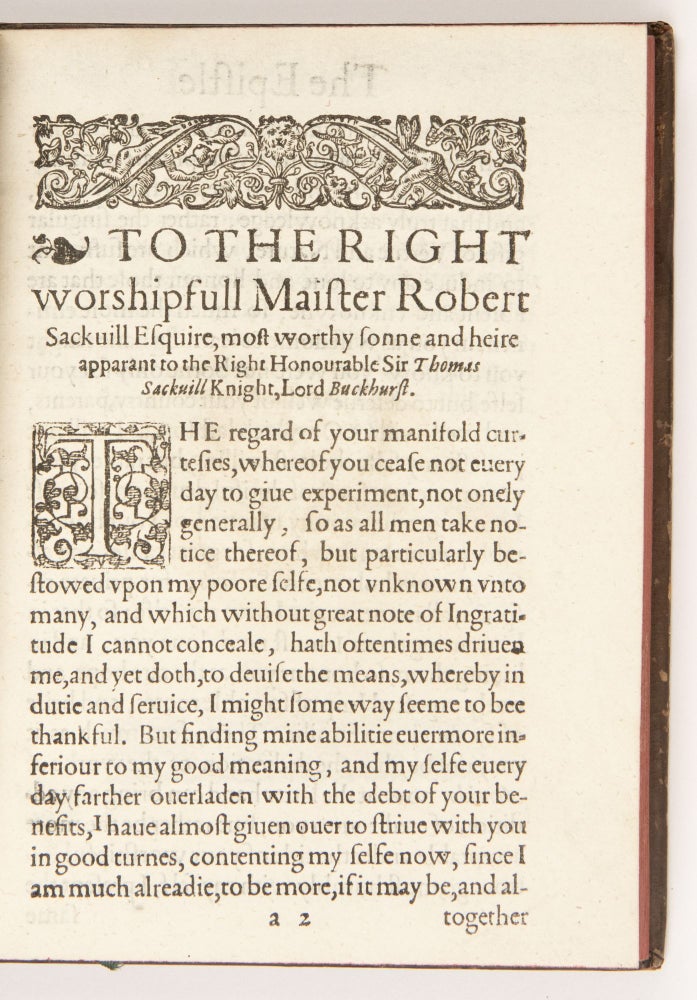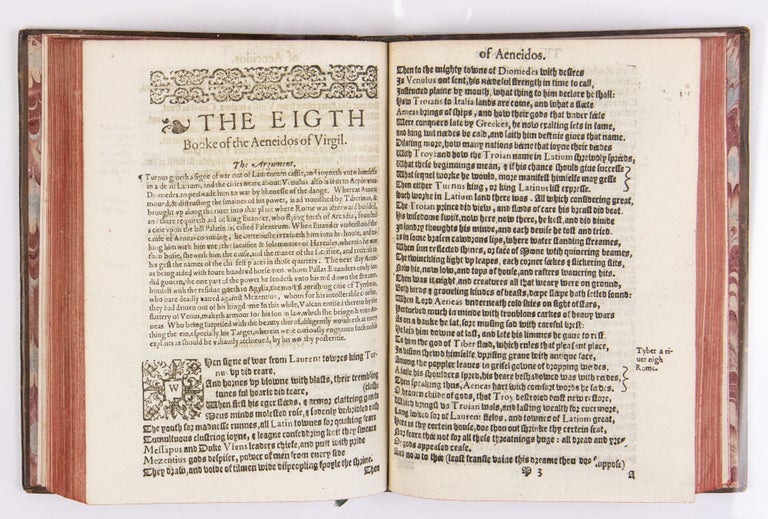The Thirteene Bookes of Aeneidos. The first twelve beeing the worke of the diuine poet, Virgil Maro, and the thirteenth, the supplement of Maphæus Vegius. Translated into English verse, to the first third part of the tenth booke, by Thomas Phaer Esquier: and the residue finished, and now newly set forth for the delight of such as are studious in poetrie: By Thomas Twyne, Doctor in Physicke.
London: Printed by Thomas Creede, 1607.
Price: $20,000.00
Quarto: 17.6 x 13.1 cm. a4, A-V8, X4 (lacking blank leaf X4)
FOURTH COMPLETE EDITION (1st 1584). The first seven books were printed in 1558, and the first nine in 1562. The first complete edition, completed by Thomas Twyne, was printed in 1573.
Bound in an exquisite binding of eighteenth-century mottled calf, highly polished and beautifully tooled in gold along the edges of the boards. The spine is separated into six compartments by the raised sewing supports, each of which, aside from that bearing the citron morocco label, is decorated with attractive floral tools. The large gilt armorial crest consisting of a Pegasus head and wings "LTHD" on upper cover, earl's coronet and "EDDE" on lower cover. The edges of the text block are stained a solid red. The binding is in exceptional condition, with only the slightest bit of wear. The text itself is in excellent condition. The text of the poem is set in Black Letter and is adorned with attractive woodcut initials and head- and tail-pieces throughout. Creede’s woodcut printer’s device appears on the title page. Excellent. Provenance: Tollemache, Earls of Dysart, Helmingham (supralibros, engraved armorial bookplate on title verso, note on front pastedown in hand of Lionel Tollemache, fourth Earl).
This is the fourth complete printing (first 1584) of the first complete English translation of Virgil’s “Aeneid”, translated by Thomas Phaer (c. 1510-1560), who was responsible for the first nine books, and Thomas Twyne (c.1500-1581), who translated the final three after Phaer’s death. The Phaer-Twyne translation was preceded by Gavin Douglas’ version in Scots (1553) and a fragmentary verse translation (books 2 and 4) by Henry Howard, Duke of Surrey (1557).
“The complete translation of the ‘Aeneid’ by Thomas Phaer and Thomas Twyne has every reason to be considered the central English Renaissance ‘Aeneid.’ The publication history tells the story succinctly. Whereas no other translation of Virgil was printed in England more than twice until the 1650s (and only the Earl of Surrey’s translation of Book 4 was printed more than once in England during this time), the translation by Phaer and Twyne went through eight editions, running from 1558 through to 1620. It influenced the translations by Richard Stanyhurst (1582), Sir John Harington (1604) and Sir Thomas Wroth (1620), and it was still one of the most important subtexts for John Vicars’ ‘The XII Aeneids of Virgil’ (1632). Much as the translation by Annibale Caro came to dominate the market for Virgil in Italian, the Phaer-Twyne ‘Aeneid’ became the English standard. It was not until the eighteenth century that any English translation of Virgil’s epic went through more editions.
“That this translation would become so successful would have been difficult to predict from its inauspicious beginnings. The initial translator, Thomas Phaer, was a physician and solicitor in the Marches of Wales. He published nothing else in verse and would have made an unlikely candidate for a great interpreter of Virgil. Nevertheless, in 1555 he began work, hoping to be the first to ‘sette open’ the gate so that future translators could follow. Although Phaer seems to have been aware of both the Middle Scots translation by Gavin Douglas and the two books by the Earl of Surrey, he presented his version of the Aeneid as the start of a new line of translations. By December 1557, Phaer had completed a version of Books 1–7. He had these printed in 1558. By April 1560, he had completed up to the end of Book 9. But late in that spring, he suffered a riding accident that ruined his hand and would soon cost him his life.
“Before his death on 12 August, he sent all that he had finished of his translation – which was then up to line 286 of Book 10 – to William Wightman, a friend of his in Pembrokeshire. This friend fervently believed in Phaer’s literary gifts and, after Phaer had passed away, he searched the deceased’s house for any trace of remaining verses. But there was none to be found. In 1562, Wightman resigned himself to publishing what he had of Phaer’s Virgil, hoping that another author might complete the project. Just over a decade later, the work was taken up by Thomas Twyne, who was a physician in London. He completed the fragment of the ‘Aeneid’ left by Phaer and had it printed in 1573.”(Brammall, The English Aeneid, Ch. 1, The Search for a Lofty British Virgil: The Early Elizabethan Aeneids of Thomas Phaer, Thomas Twyne and Richard Stanyhurst, p. 19 f.).
STC 24805; Harris, First Printed Translations into English (1573) p.159; cf. Pforzheimer Cataogue 1028; cf. Langland to Wither, 238


